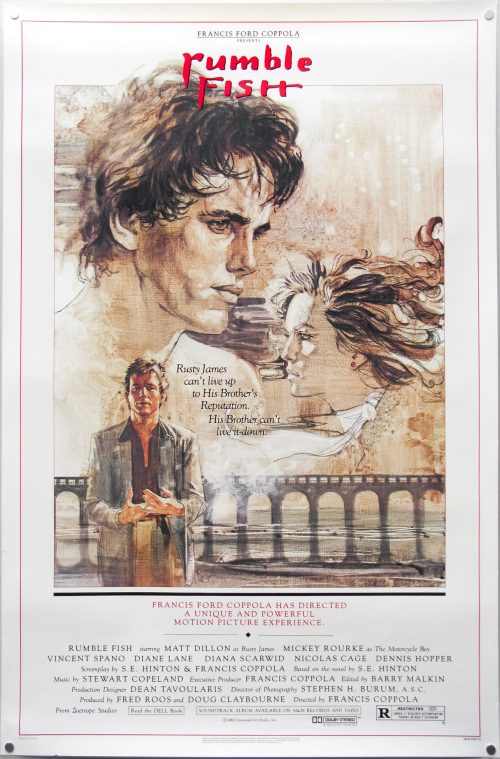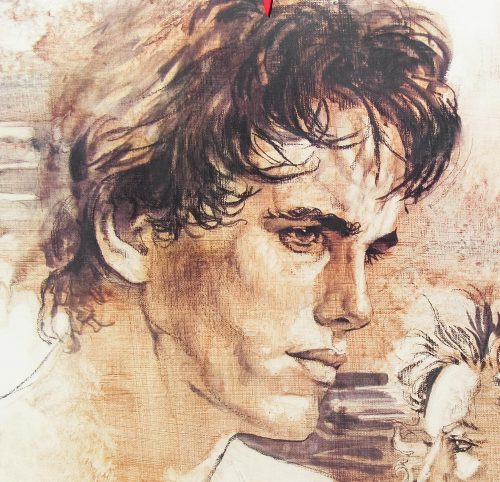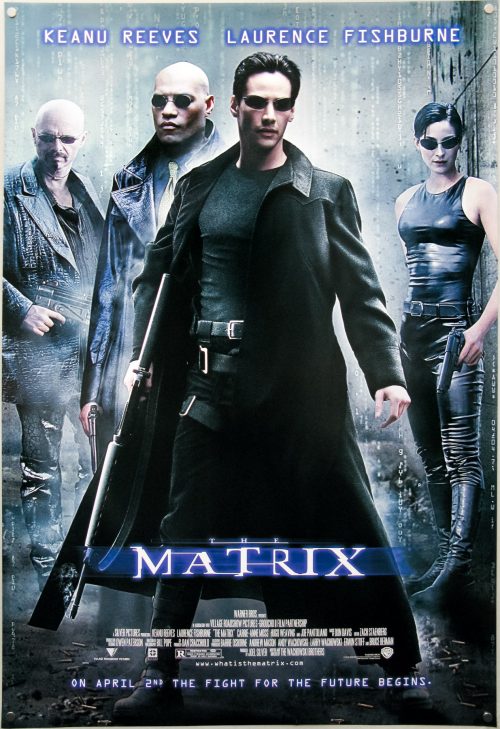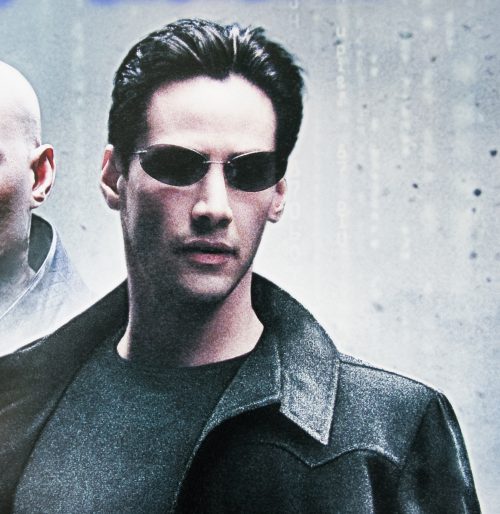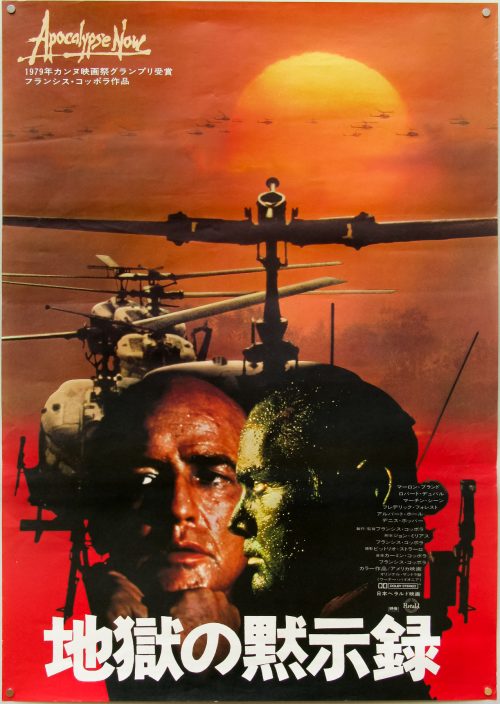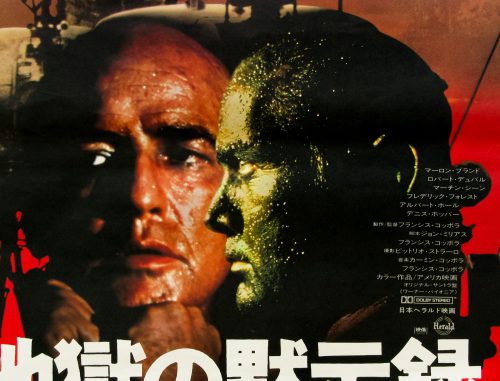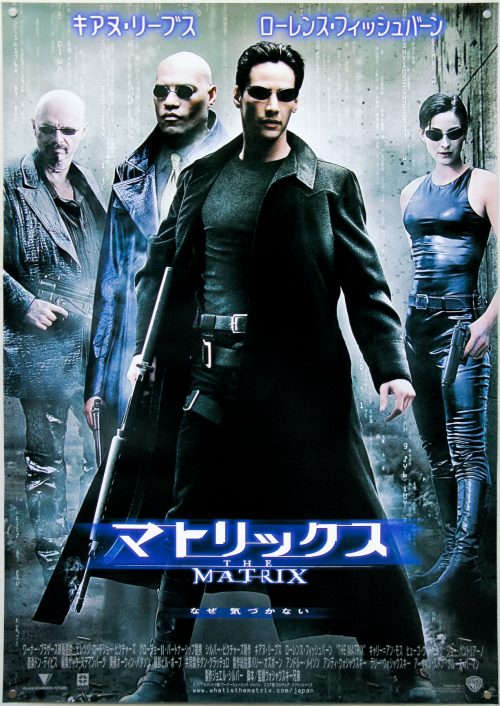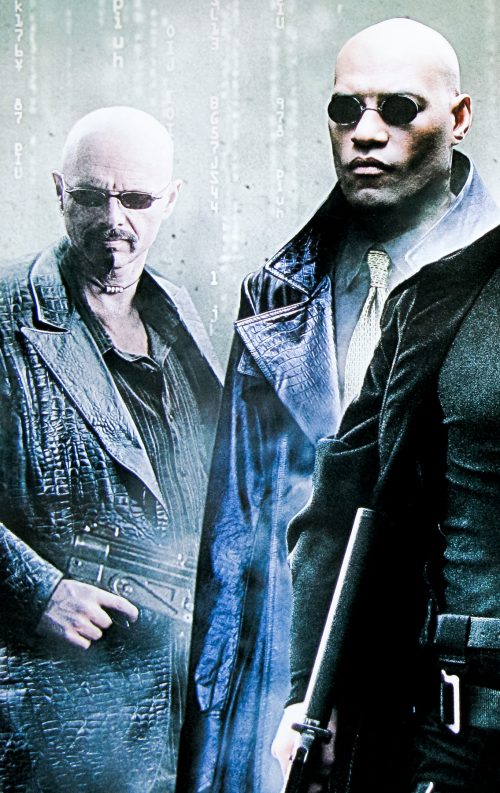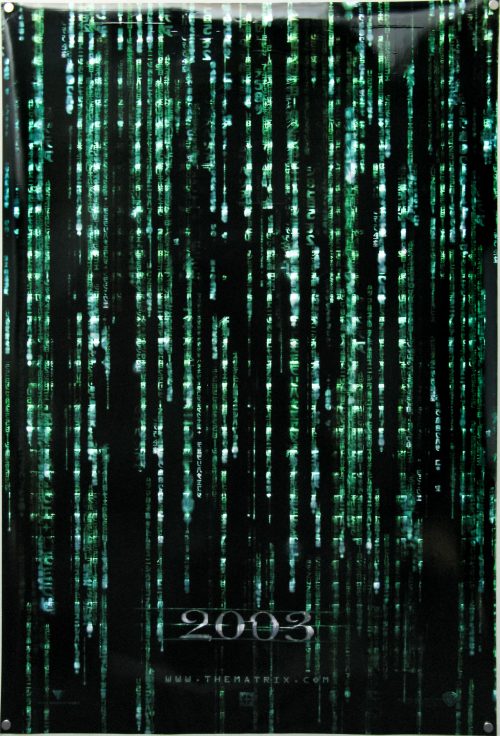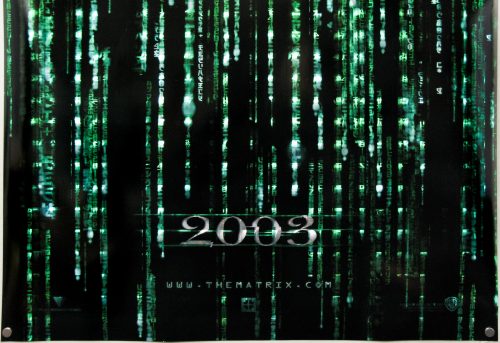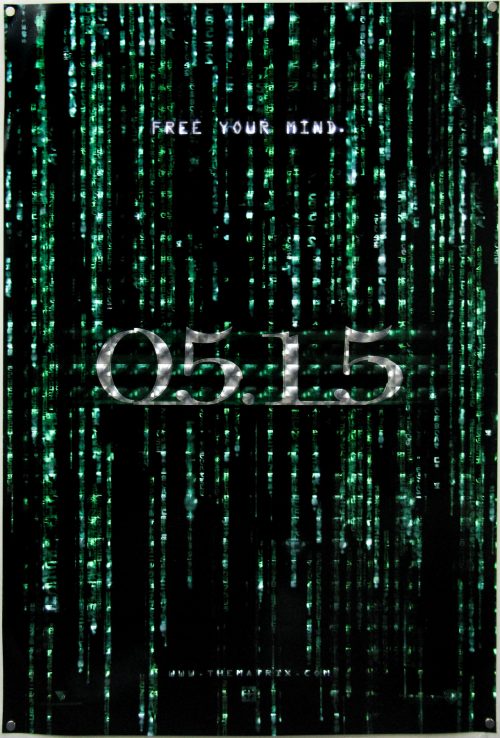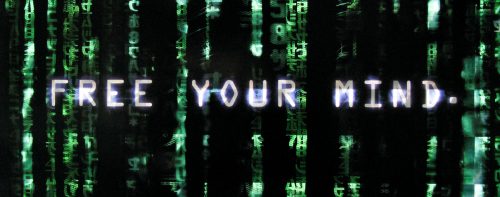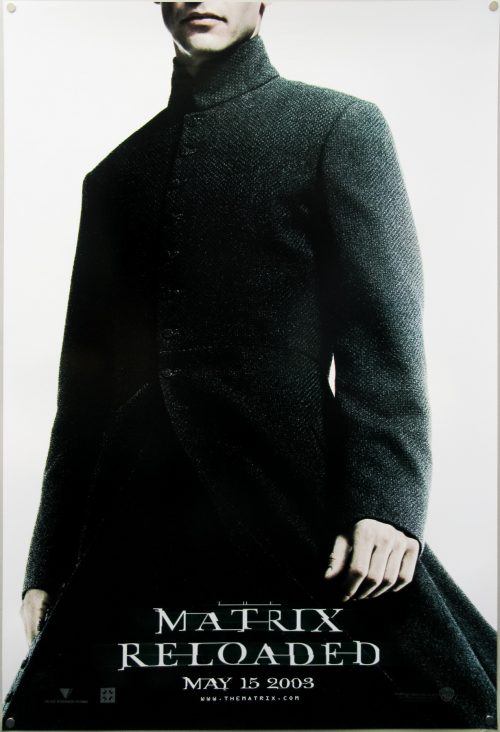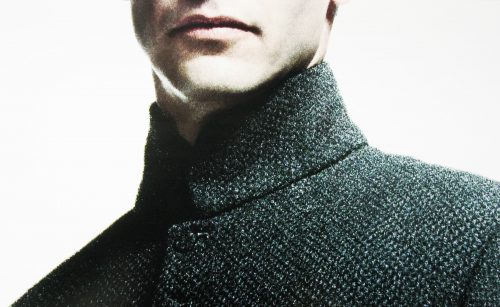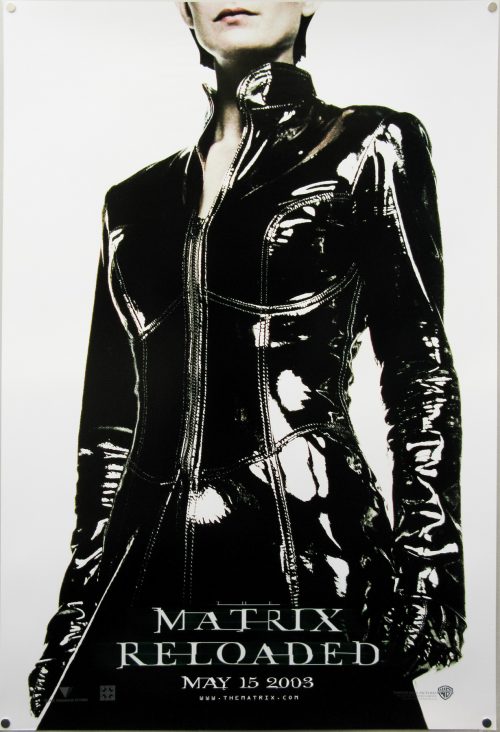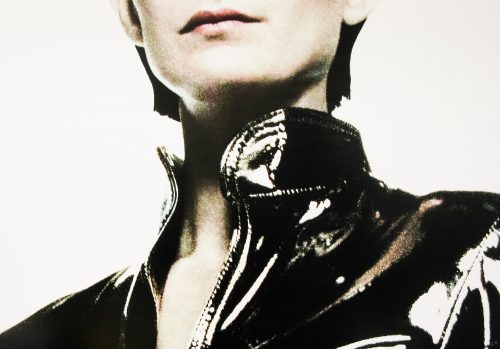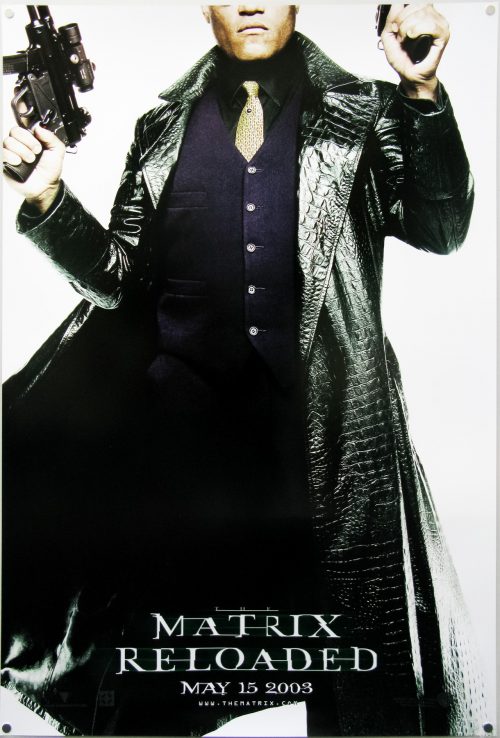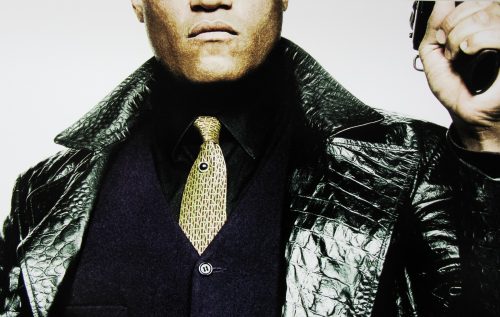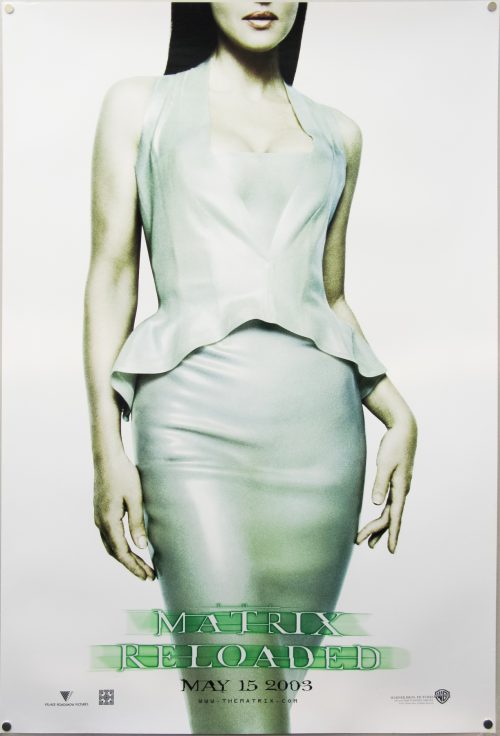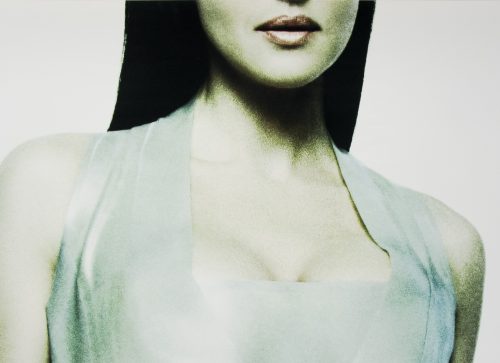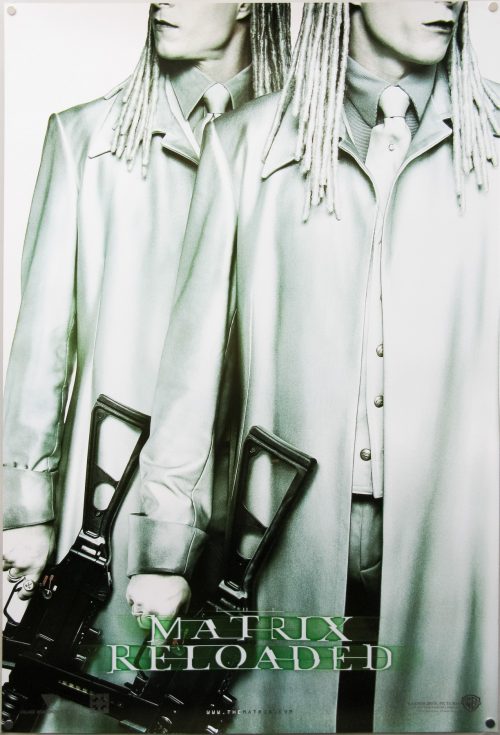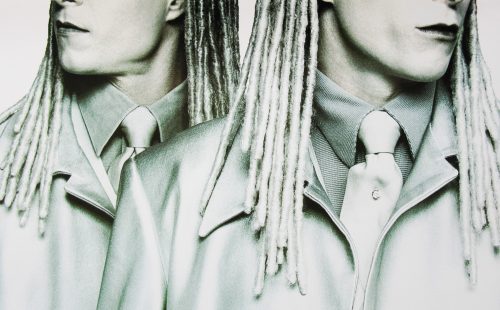You searched for: Laurence%2520Fishburne
17.05.11
- Title
- Rumble Fish
- AKA
- Rusty James (Canada - French title / France)
- Year of Film
- 1983
- Director
- Francis Ford Coppola
- Starring
- Matt Dillon, Mickey Rourke, Diane Lane, Vincent Spano, Nicolas Cage, Dennis Hopper, Laurence Fishburne, Chris Penn
- Origin of Film
- USA
- Genre(s) of Film
- Matt Dillon, Mickey Rourke, Diane Lane, Vincent Spano, Nicolas Cage, Dennis Hopper, Laurence Fishburne, Chris Penn,
- Type of Poster
- One sheet
- Style of Poster
- --
- Origin of Poster
- USA
- Year of Poster
- 1983
- Designer
- Unknown
- Artist
- John Solie
- Size (inches)
- 27" x 41"
- SS or DS
- SS
- NSS #
- 830113
- Tagline
- Rusty James can't live up to his brother's reputation. His brother can't live it down.
17.05.11
- Title
- The Matrix
- AKA
- --
- Year of Film
- 1999
- Director
- The Wachowski brothers
- Starring
- Keanu Reeves, Laurence Fishburne, Carrie-Anne Moss, Hugo Weaving, Gloria Foster, Joe Pantoliano, Marcus Chong, Julian Arahanga, Matt Doran, Belinda McClory, Anthony Ray Parker
- Origin of Film
- USA | Australia
- Genre(s) of Film
- Keanu Reeves, Laurence Fishburne, Carrie-Anne Moss, Hugo Weaving, Gloria Foster, Joe Pantoliano, Marcus Chong, Julian Arahanga, Matt Doran, Belinda McClory, Anthony Ray Parker,
- Type of Poster
- One sheet
- Style of Poster
- Advance
- Origin of Poster
- USA
- Year of Poster
- 1999
- Designer
- Concept Arts
- Artist
- --
- Size (inches)
- 27" x 39 15/16"
- SS or DS
- DS
- NSS #
- --
- Tagline
- --
17.05.11
- Title
- Apocalypse Now
- AKA
- --
- Year of Film
- 1979
- Director
- Francis Ford Coppola
- Starring
- Marlon Brando, Martin Sheen, Robert Duvall, Frederic Forrest, Sam Bottoms, Laurence Fishburne, Albert Hall, Harrison Ford, Dennis Hopper, G.D. Spradlin, Jerry Ziesmer, Scott Glenn, Bo Byers, James Keane
- Origin of Film
- USA
- Genre(s) of Film
- Marlon Brando, Martin Sheen, Robert Duvall, Frederic Forrest, Sam Bottoms, Laurence Fishburne, Albert Hall, Harrison Ford, Dennis Hopper, G.D. Spradlin, Jerry Ziesmer, Scott Glenn, Bo Byers, James Keane,
- Type of Poster
- B2
- Style of Poster
- --
- Origin of Poster
- Japan
- Year of Poster
- 1980
- Designer
- Unknown
- Artist
- Unknown
- Size (inches)
- 20 6/16" x 28 11/16"
- SS or DS
- SS
- Tagline
- --
17.05.11
- Title
- The Matrix
- AKA
- --
- Year of Film
- 1999
- Director
- The Wachowski Brothers
- Starring
- Keanu Reeves, Laurence Fishburne, Carrie-Anne Moss, Hugo Weaving, Gloria Foster, Joe Pantoliano, Marcus Chong, Julian Arahanga, Matt Doran, Belinda McClory, Anthony Ray Parker
- Origin of Film
- USA | Australia
- Genre(s) of Film
- Keanu Reeves, Laurence Fishburne, Carrie-Anne Moss, Hugo Weaving, Gloria Foster, Joe Pantoliano, Marcus Chong, Julian Arahanga, Matt Doran, Belinda McClory, Anthony Ray Parker,
- Type of Poster
- B2
- Style of Poster
- --
- Origin of Poster
- Japan
- Year of Poster
- 1999
- Designer
- Unknown
- Artist
- --
- Size (inches)
- 20 6/16" x 28 13/16"
- SS or DS
- SS
- Tagline
- --
17.05.11
- Title
- The Matrix Reloaded
- AKA
- --
- Year of Film
- 2003
- Director
- The Wachowski brothers
- Starring
- Keanu Reeves, Laurence Fishburne, Carrie-Anne Moss, Hugo Weaving, Harold Perrineau, Randall Duk Kim, Jada Pinkett Smith, Helmut Bakaitis
- Origin of Film
- USA | Australia
- Genre(s) of Film
- Keanu Reeves, Laurence Fishburne, Carrie-Anne Moss, Hugo Weaving, Harold Perrineau, Randall Duk Kim, Jada Pinkett Smith, Helmut Bakaitis,
- Type of Poster
- One sheet
- Style of Poster
- Teaser holofoil - 2003 version
- Origin of Poster
- USA
- Year of Poster
- 2003
- Designer
- Concept Arts
- Artist
- --
- Size (inches)
- 27" x 40"
- SS or DS
- SS
- NSS #
- --
- Tagline
- --
17.05.11
- Title
- The Matrix Reloaded
- AKA
- --
- Year of Film
- 2003
- Director
- The Wachowski brothers
- Starring
- Keanu Reeves, Laurence Fishburne, Carrie-Anne Moss, Hugo Weaving, Harold Perrineau, Randall Duk Kim, Jada Pinkett Smith, Helmut Bakaitis
- Origin of Film
- USA | Australia
- Genre(s) of Film
- Keanu Reeves, Laurence Fishburne, Carrie-Anne Moss, Hugo Weaving, Harold Perrineau, Randall Duk Kim, Jada Pinkett Smith, Helmut Bakaitis,
- Type of Poster
- One sheet
- Style of Poster
- Holofoil - 05.15 version
- Origin of Poster
- USA
- Year of Poster
- 2003
- Designer
- Concept Arts
- Artist
- --
- Size (inches)
- 27" x 40"
- SS or DS
- SS
- NSS #
- --
- Tagline
- --
17.05.11
- Title
- The Matrix Reloaded
- AKA
- --
- Year of Film
- 2003
- Director
- The Wachowski brothers
- Starring
- Keanu Reeves, Laurence Fishburne, Carrie-Anne Moss, Hugo Weaving, Harold Perrineau, Randall Duk Kim, Jada Pinkett Smith, Helmut Bakaitis
- Origin of Film
- USA | Australia
- Genre(s) of Film
- Keanu Reeves, Laurence Fishburne, Carrie-Anne Moss, Hugo Weaving, Harold Perrineau, Randall Duk Kim, Jada Pinkett Smith, Helmut Bakaitis,
- Type of Poster
- One sheet
- Style of Poster
- Teaser - Neo
- Origin of Poster
- USA
- Year of Poster
- 2003
- Designer
- Concept Arts
- Artist
- --
- Size (inches)
- 27" x 40"
- SS or DS
- DS
- NSS #
- --
- Tagline
- --
17.05.11
- Title
- The Matrix Reloaded
- AKA
- --
- Year of Film
- 2003
- Director
- The Wachowski brothers
- Starring
- Keanu Reeves, Laurence Fishburne, Carrie-Anne Moss, Hugo Weaving, Harold Perrineau, Randall Duk Kim, Jada Pinkett Smith, Helmut Bakaitis
- Origin of Film
- USA | Australia
- Genre(s) of Film
- Keanu Reeves, Laurence Fishburne, Carrie-Anne Moss, Hugo Weaving, Harold Perrineau, Randall Duk Kim, Jada Pinkett Smith, Helmut Bakaitis,
- Type of Poster
- One sheet
- Style of Poster
- Teaser - Trinity
- Origin of Poster
- USA
- Year of Poster
- 2003
- Designer
- Concept Arts
- Artist
- --
- Size (inches)
- 27" x 40"
- SS or DS
- DS
- NSS #
- --
- Tagline
- --
17.05.11
- Title
- The Matrix Reloaded
- AKA
- --
- Year of Film
- 2003
- Director
- The Wachowski brothers
- Starring
- Keanu Reeves, Laurence Fishburne, Carrie-Anne Moss, Hugo Weaving, Harold Perrineau, Randall Duk Kim, Jada Pinkett Smith, Helmut Bakaitis
- Origin of Film
- USA | Australia
- Genre(s) of Film
- Keanu Reeves, Laurence Fishburne, Carrie-Anne Moss, Hugo Weaving, Harold Perrineau, Randall Duk Kim, Jada Pinkett Smith, Helmut Bakaitis,
- Type of Poster
- One sheet
- Style of Poster
- Teaser - Morpheus
- Origin of Poster
- USA
- Year of Poster
- 2003
- Designer
- Concept Arts
- Artist
- --
- Size (inches)
- 27" x 40"
- SS or DS
- DS
- NSS #
- --
- Tagline
- --
17.05.11
- Title
- The Matrix Reloaded
- AKA
- --
- Year of Film
- 2003
- Director
- The Wachowski brothers
- Starring
- Keanu Reeves, Laurence Fishburne, Carrie-Anne Moss, Hugo Weaving, Harold Perrineau, Randall Duk Kim, Jada Pinkett Smith, Helmut Bakaitis
- Origin of Film
- USA | Australia
- Genre(s) of Film
- Keanu Reeves, Laurence Fishburne, Carrie-Anne Moss, Hugo Weaving, Harold Perrineau, Randall Duk Kim, Jada Pinkett Smith, Helmut Bakaitis,
- Type of Poster
- One sheet
- Style of Poster
- Teaser - Persephone
- Origin of Poster
- USA
- Year of Poster
- 2003
- Designer
- Concept Arts
- Artist
- --
- Size (inches)
- 27" x 40"
- SS or DS
- DS
- NSS #
- --
- Tagline
- --
17.05.11
- Title
- The Matrix Reloaded
- AKA
- --
- Year of Film
- 2003
- Director
- The Wachowski brothers
- Starring
- Keanu Reeves, Laurence Fishburne, Carrie-Anne Moss, Hugo Weaving, Harold Perrineau, Randall Duk Kim, Jada Pinkett Smith, Helmut Bakaitis
- Origin of Film
- USA | Australia
- Genre(s) of Film
- Keanu Reeves, Laurence Fishburne, Carrie-Anne Moss, Hugo Weaving, Harold Perrineau, Randall Duk Kim, Jada Pinkett Smith, Helmut Bakaitis,
- Type of Poster
- One sheet
- Style of Poster
- Teaser - Twins with guns
- Origin of Poster
- UK
- Year of Poster
- 2003
- Designer
- Concept Arts
- Artist
- --
- Size (inches)
- 27 1/16" x 40"
- SS or DS
- DS
- NSS #
- --
- Tagline
- --
